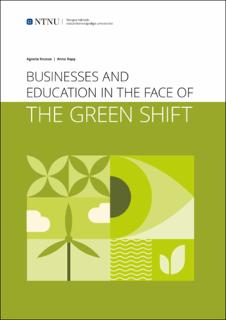| dc.description.abstract | In Norway, the need for green transformation arises amid attention to climate change and the decline in the Norwegian oil industry from 2014-2017. Norway predicts that sun and wind will become available at a low cost in European and global energy systems during the 2020-2030 period. Green industrial investments require suitable land, infrastructure, raw materials, capital, and expertise. It is estimated that an employment need of 13.000 (low scenario), 64.000 (medium scenario), and 115.000 (high scenario), with a need for around 50 per cent of crafts and operators, 40 per cent of engineers, and ICT developers (Landsend-Henriksen, 2022). Incorporating more significant quantities of wind-solar energy with hydropower, geothermal energy (hydrogen), and biomass is challenging. Environmentally friendly production of batteries is emphasised, where the Nordic region is at the forefront of lithium-ion batteries and a circular economy. (Nordic Council of Ministers, 2021; Policy brief, 2022).
The results from the interviews with Norwegian and Swedish companies, along with their subsidiary companies involved in hydropower, thermal power, wind parks, and solar energy, indicate that they are actively engaged in cross-border activities for the green shift. They cooperate among others on skill development, cooperation for company growth, and education. The results also give at hand that in both Trøndelag and Jämtland, there are challenges in recruiting staff within several disciplines. In parallel, there are difficulties in finding skilled craftsmen/women to contribute to the demands of catering for the green shift. In Norway, a flexible educational system is expected to prevent centralisation and provide necessary skills to districts. County municipality has a central role through its responsibility for political directives involving competence both for the public and private sectors (Meld.St14, 2022-2023). | |
